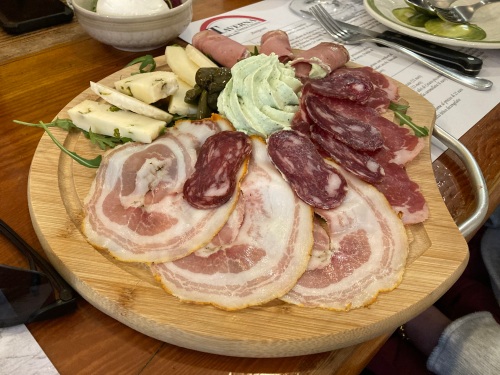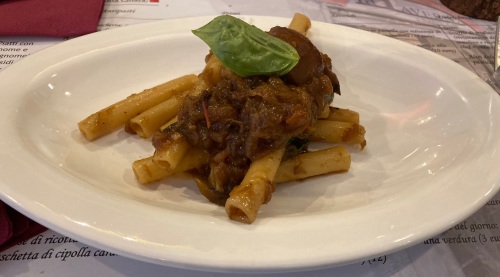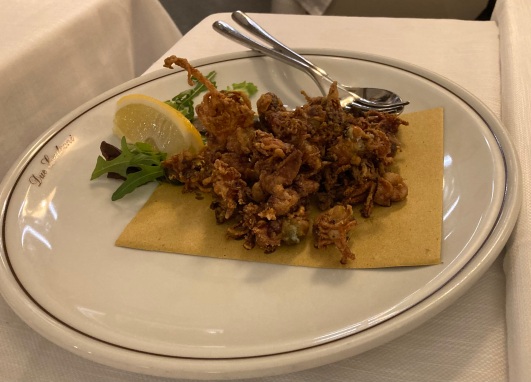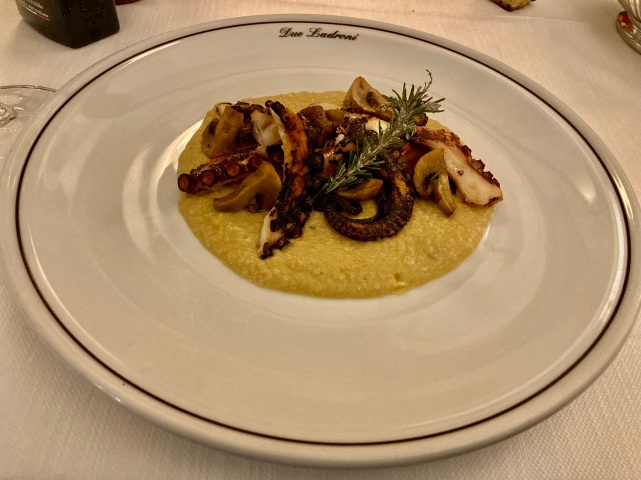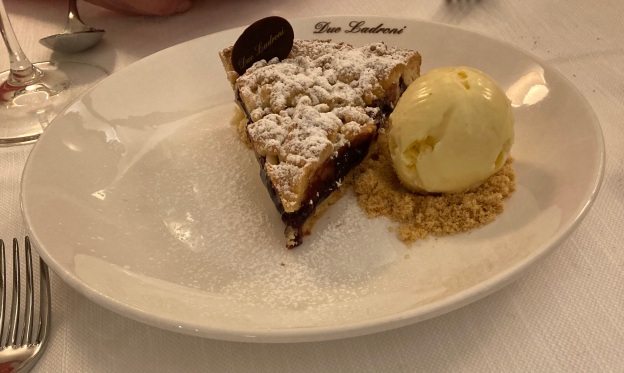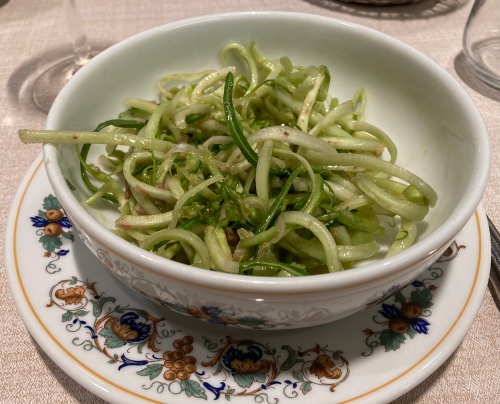Corte Carezzabella
No matter how may times I go to Italy, I always discover something new. For example, last summer Federica Schir (federica@federicaschir-pr.com) introduced me to a winery that was much more than a winery in an area of the Veneto which I was not familiar with and a grape variety I had never tasted before. This is Corte Carezzabella.
Corte Carezzabella is a farm located at the edge of the Adige River, in the village of San Martino di Venezze near Rovigo, in the Veneto region. It is close to Venice, Padua and Ferrara. The farm was established early in the last century and at that time the main production was from the fruit orchards.
Over the years the old and charming buildings on the property have been restored. Today the property is about 60 hectares split between vineyards, orchards of apples, pears, peaches and blueberries, and wheat fields in constant rotation. All of the produce is certified organic.
When Federica and I arrived, we were greeted by Chiara Reato, who manages the agriturismo and hospitality part and is responsible for keeping all of their different activities connected. She spoke about the farm and the people involved.

Francesco Favaretto, Francesco Mazzetto and Chiara
Francesco Favaretto, Chiara’s husband, runs the farming part, taking particular care of the wine project and its development from the fields to the cellar and the promotion of the wine.
Tommaso, Chiara’s brother, together with his wife Marianna, run the outdoor educational project that includes a kindergarten for children from 3 up to 6 years old.
Francesco Mazzetto is the winemaker (enologo). He is an independent freelancer with whom they have been collaborating since the 2020 vintage.

The farm shop where all the products from the farm are sold
In addition, there is a teaching farm for teenagers and adults, and a cooking lab that produces jam, preserves, juice, and many other products which can be purchased in the farm shop.
As an Agriturisimo, Corte Carezzabella is not only a working farm, but also has rooms and apartments for guests, a restaurant, and meeting facilities. Chiara said the goal is to transform the farm into a healthier ecosystem as well as a pleasant place to visit. The restaurant and shop offer typical local food with traditional dishes prepared with the products from the farm.
After a tour, we enjoyed a delicious lunch prepared by Chiara using the products from the farm.
The Wines
I was very impressed with all the wines I tasted at Corte Carezzabella. There is very little interference in the wine making process. Theirs are the type of wines that taste like the grapes they are made from and therefore make excellent food wines. I did not just taste the wines but drank them with lunch much to my enjoyment.
 Pinot Grigio Delle Venezia IGT 2020 made from 100% Pinot Grigio. The production zone is San Martino di Venezze (RO). Soil composition is 85% sand, 10% silt and 5% clay. Stratification characteristics are caused by the proximity of the vineyards to the river, that when it floods, deposits light and easy draining soils on top of a less permeable clay layer. Vineyard training method is “doppio capovolto” (double-arched cane). Manual harvest takes place the 3rd week of August. There is a destemming of the grapes followed by a direct pressing followed by cold static sedimentation. Fermentation is in stainless steel tanks and late maturation on the yeast in steel and in bottle before release. The wine has hints of citrus fruit, pears, golden apples and a touch of acacia flowers.
Pinot Grigio Delle Venezia IGT 2020 made from 100% Pinot Grigio. The production zone is San Martino di Venezze (RO). Soil composition is 85% sand, 10% silt and 5% clay. Stratification characteristics are caused by the proximity of the vineyards to the river, that when it floods, deposits light and easy draining soils on top of a less permeable clay layer. Vineyard training method is “doppio capovolto” (double-arched cane). Manual harvest takes place the 3rd week of August. There is a destemming of the grapes followed by a direct pressing followed by cold static sedimentation. Fermentation is in stainless steel tanks and late maturation on the yeast in steel and in bottle before release. The wine has hints of citrus fruit, pears, golden apples and a touch of acacia flowers.
 “Brillo” Bianco Veneto IGT Sparkling wine made from Trebbiano and Pinot Grigio. There is a destemming of the grapes followed by a direct pressing and cold static sedimentation for the first fermentation in stainless steel tanks. Then there is a 40 day fermentation at a controlled temperature with must in order to obtain 2.5 bars pf pressure and the prise de mousse. The wine is aged in the bottle on its own refermented yeasts. It has hints of yellow flowers, citrus fruit and green apple.
“Brillo” Bianco Veneto IGT Sparkling wine made from Trebbiano and Pinot Grigio. There is a destemming of the grapes followed by a direct pressing and cold static sedimentation for the first fermentation in stainless steel tanks. Then there is a 40 day fermentation at a controlled temperature with must in order to obtain 2.5 bars pf pressure and the prise de mousse. The wine is aged in the bottle on its own refermented yeasts. It has hints of yellow flowers, citrus fruit and green apple.
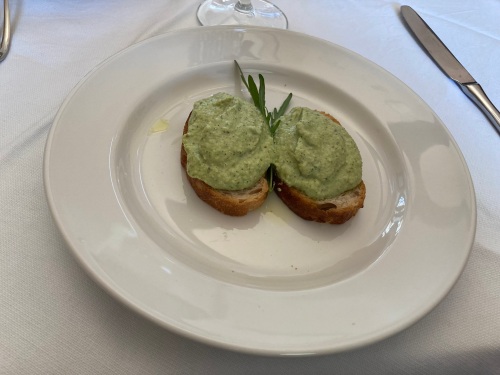 With the first two wines we had crostini with a fresh vegetable topping.
With the first two wines we had crostini with a fresh vegetable topping.
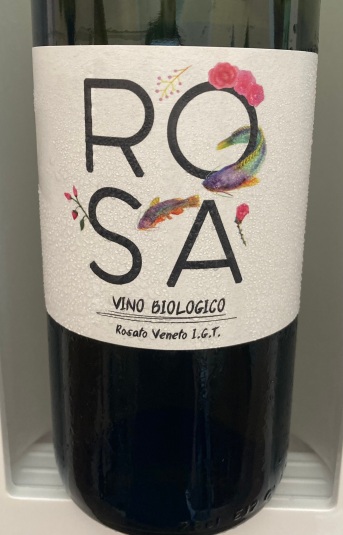 Rosato Veneto IGT Rosato Biologico “Rosa” made from 100% Merlot. Soil is 85% sand, 10% lime and 5% clay. The training system is cordon speronato. Harvest is manual during the first weeks of September. Only 60% of the grapes are used. The wine has hints of pomegranate, raspberry, strawberry and a touch of pink grapefruit.
Rosato Veneto IGT Rosato Biologico “Rosa” made from 100% Merlot. Soil is 85% sand, 10% lime and 5% clay. The training system is cordon speronato. Harvest is manual during the first weeks of September. Only 60% of the grapes are used. The wine has hints of pomegranate, raspberry, strawberry and a touch of pink grapefruit.
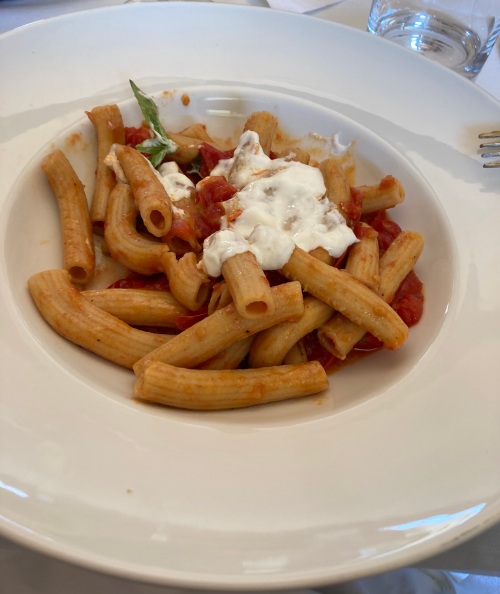 Our second course was Pasta with a fresh tomato sauce and cheese.
Our second course was Pasta with a fresh tomato sauce and cheese.
 Turchetta Veneto IGT 2020 made from 100% Turchetta. The training system is Sylvoz. Manual harvest takes place the 3rd week of October. Destemming and pressing of the grapes, then fermentation/maceration at a controlled temperature and the wine is in contact with the skins for 21 days. Aging is in concrete and in bottle until it is released. The wine has hints of cherry, blackberries, violets and a touch of spice. Turchetta is a local red grape found around the Rogivo area. There are very few hectares under cultivation.
Turchetta Veneto IGT 2020 made from 100% Turchetta. The training system is Sylvoz. Manual harvest takes place the 3rd week of October. Destemming and pressing of the grapes, then fermentation/maceration at a controlled temperature and the wine is in contact with the skins for 21 days. Aging is in concrete and in bottle until it is released. The wine has hints of cherry, blackberries, violets and a touch of spice. Turchetta is a local red grape found around the Rogivo area. There are very few hectares under cultivation.
 Our third course was vitello tonnato, a classic summer dish of cold sliced veal with tuna mayonnaise sauce.
Our third course was vitello tonnato, a classic summer dish of cold sliced veal with tuna mayonnaise sauce.
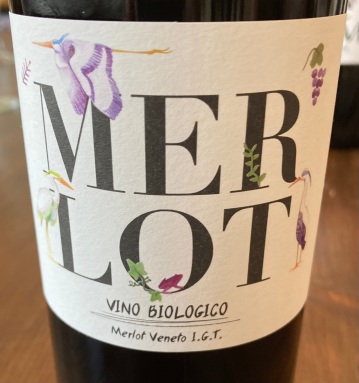 Merlot Veneto IGT 2021 made from 100% Merlot. The training system is Sylvoz. Harvest is the 3rd week of October. Destemming and pressing of the grapes is followed by fermentation/ maceration at a controlled temperature with skin contact for about 21 days. The wine ages in concrete and in the bottle before release. The wine has hints of mulberry and blackberry with herbaceous notes.
Merlot Veneto IGT 2021 made from 100% Merlot. The training system is Sylvoz. Harvest is the 3rd week of October. Destemming and pressing of the grapes is followed by fermentation/ maceration at a controlled temperature with skin contact for about 21 days. The wine ages in concrete and in the bottle before release. The wine has hints of mulberry and blackberry with herbaceous notes.
All of the wines are certified organic.
For more information see:
Agriturismo Corte Carezzabella
Azienda Agricola Il Frutteto di San Martino
Via G.Marconi, 752-754 San Martino di Venezze, 45030 Rovigo
Tel: +39.0425.176157 – Mobile: +351.1934437
www.cortecarezzabella.com
 We were greeted by Patrizia Persiani, one of the owners.
We were greeted by Patrizia Persiani, one of the owners. I stopped to admire the pastry display. It is a very cozy and welcoming restaurant.
I stopped to admire the pastry display. It is a very cozy and welcoming restaurant. We started with liver crostini, a dish I associate more with Tuscany than Rome. But it was a perfect starter, tangy with capers and vinegar.
We started with liver crostini, a dish I associate more with Tuscany than Rome. But it was a perfect starter, tangy with capers and vinegar. . For our pasta course, we ordered the pasta alla gricia, one of the four favorite pastas of traditional Roman cooking. It’s made with guanciale (pork cheek), pecorino cheese and lots of black pepper and served here with thick, homemade spaghetti.
. For our pasta course, we ordered the pasta alla gricia, one of the four favorite pastas of traditional Roman cooking. It’s made with guanciale (pork cheek), pecorino cheese and lots of black pepper and served here with thick, homemade spaghetti.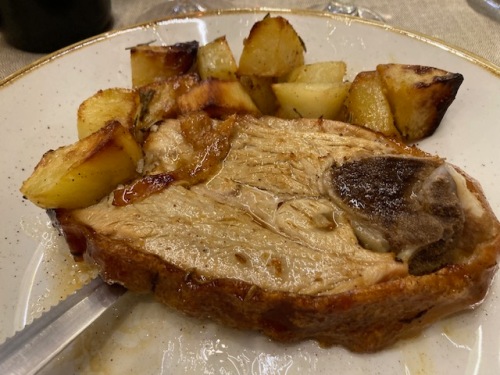 For our main course, we had roast suckling pig. The skin was crispy and the tender meat was scented with herbs. With it we had rosemary roasted potatoes and an order of cicoria ripassata. Chicory is a member of the endive family that is popular at this time of the year. It was sauteed with garlic and chile.
For our main course, we had roast suckling pig. The skin was crispy and the tender meat was scented with herbs. With it we had rosemary roasted potatoes and an order of cicoria ripassata. Chicory is a member of the endive family that is popular at this time of the year. It was sauteed with garlic and chile. Chianti Classico DOCG “San Donatino” Poggio Ai Mori made from 100% Sangiovese. The vineyard is at 400 meters and the soil is mainly galestro. Training system is spurred cordon and guyot. There is mechanical weeding and the use of green manure in alternate years. Only copper, sulfur and products compatible with the Certification Bio are used. Harvest is by hand. Traditional vinification with daily pumping over. Spontaneous fermentation is by natural yeasts. The fermentation is not temperature controlled. The wine remains on the skins for three weeks and it remains on the lees for 6 months. The wine is aged in steel for 2 years and in bottle for 6 months before release. It has hints of cherry, red current, raspberry, a touch of plum and a hint of violets. The wine was perfect match with the food.
Chianti Classico DOCG “San Donatino” Poggio Ai Mori made from 100% Sangiovese. The vineyard is at 400 meters and the soil is mainly galestro. Training system is spurred cordon and guyot. There is mechanical weeding and the use of green manure in alternate years. Only copper, sulfur and products compatible with the Certification Bio are used. Harvest is by hand. Traditional vinification with daily pumping over. Spontaneous fermentation is by natural yeasts. The fermentation is not temperature controlled. The wine remains on the skins for three weeks and it remains on the lees for 6 months. The wine is aged in steel for 2 years and in bottle for 6 months before release. It has hints of cherry, red current, raspberry, a touch of plum and a hint of violets. The wine was perfect match with the food.



